Unknown Unknowns: Psi, Association & the Physics of Information
I have always been skeptical of parapsychologists, because their experiments and their theories borrow the standard concepts of space and time dimensions from physics. These concepts seem obsolete to me. They are not appropriate for understanding telepathy, or the moving of objects at a distance, or ghosts, or Melchizedek. I have always been struck also by the fact that energy and information are one and the same thing under two different aspects. Our physics professors teach us this; they they never draw the consequences. —Jacques Vallee
In his 1979 book Messengers of Deception, Jacques Vallee called for a “physics of information” that would enable scientists to think in a more nuanced way about a wide range of paranormal phenomena. Four decades later, it is an idea that is now strongly resonating with many UFO writers. The late Bruce Duensing had been thinking about the equivalence of energy and information on his blog, for example; and lately I see the phrase “physics of information” everywhere I turn. Vallee himself reiterated his call in a TED talk, “A Theory of Everything (Else)” a few years ago (linked below).
In absence of a nice, materialist-sounding theory, the behavior, or character, of psi becomes almost like an interaction with an omniscient intelligence.
What Vallee’s book (and TED talk) left mostly between the lines is that his idea for such a physics arose as much or more from his involvement with psi research in the 1970s as it did from his thinking about UFOs. As a friend and colleague of the CIA-funded researchers and psychics who were revolutionizing the study of psi at SRI, Vallee, whose day job at SRI in the early part of that decade was developing the Arpanet, was in the right place at the right time to cross-fertilize their work with his own wildly outside-the-box thinking. (If there’s anything studying UFOs can do to some people, it is removing the usual barriers to thought and creativity.) Vallee’s contribution to the field of psi was decisive, and his comment about a physics of information directly refers to that contribution.
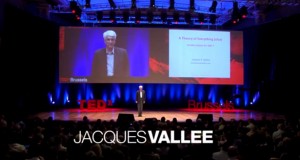 From the beginnings of psychical research in Frederic Myers’ day up until the early 1970s, psi was commonly (albeit not universally) assumed to work somehow on the model of telegraphic or radio transmission. This metaphor invokes the notion of a sender and receiver, and thus psi was generally thought to be fundamentally a connection between minds—that is, telepathy. The early research at SRI proceeded on this assumption. At SRI, the early protocol in what came to be called “remote viewing” was to use an “outbounder” as a psychic transmitter—that is, a confederate who went to a randomly determined location in the Bay Area while the psychic back at the lab described what they were seeing.
From the beginnings of psychical research in Frederic Myers’ day up until the early 1970s, psi was commonly (albeit not universally) assumed to work somehow on the model of telegraphic or radio transmission. This metaphor invokes the notion of a sender and receiver, and thus psi was generally thought to be fundamentally a connection between minds—that is, telepathy. The early research at SRI proceeded on this assumption. At SRI, the early protocol in what came to be called “remote viewing” was to use an “outbounder” as a psychic transmitter—that is, a confederate who went to a randomly determined location in the Bay Area while the psychic back at the lab described what they were seeing.
The SRI team was at that time struggling with how to make this form of clairvoyance more suitable to real-world intelligence applications, and they were forced to adjust their operating assumptions to a growing realization that it didn’t actually operate by known physical principles, or via anything like telepathy. They could find no electromagnetic force at work and no “inverse square law” that diminished ESP or psychokinesis (PK) over distance, and psi effects seemed to ignore any form of electromagnetic shielding. Another blow to the “telepathy” concept came from New York artist/psychic Ingo Swann, who brought to the team a different model of how psi operated—not as telepathy but as some discarnate part of consciousness leaving the body and seeing things at a distance.
In his own previous work with ESP researchers in New York, Swann had traveled out of body to view concealed objects, and thus his assumption was that a psychic didn’t need another person as a sender of the information; the psychic could theoretically just “go there” and see the target in his/her mind. This worked so long as you knew where you were trying to go psychically; but the protocols at SRI demanded the psychic be blind to what and where the target was. How could the psychic know where to send his or her consciousness, or find the needed information, without something concrete to home in on?
Here is where Vallee, with his experience in the problem of accessing information in the virtual, dimensionless world of a computer database, was able to offer Swann a key piece of insight: thinking of psi information in terms of “addressing.” Vallee thus suggested to Swann using geographic coordinates to designate the target.* Swann saw the logic of this, and (according to Jim Schnabel’s account in his book Remote Viewers) initially waged an uphill battle convincing Hal Puthoff and the other SRI folks to experiment with using coordinates. The tries were a success, and thus “coordinate remote viewing” or CRV was born—the methodology that became the military protocol refined and taught by Swann to the first generation of military remote viewers over the subsequent decade.
Just Say “Target”
The leap initiated by Vallee and Swann should not be underestimated. The logic of using coordinates is really an ‘illogic,’ with any moment’s thought about the problem: Geographic coordinates are a purely human construct with no objective link to places on the globe; they are an arbitrary informational overlay. It is an example, in fact, of the arbitrary connection between words and things that forms the basis of structural linguistics—the signifier bears no necessary connection to the signified; linguistic meaning is a function of how signifiers relate to each other, as in a vast grid system, not how they relate to actual things in the real world. We are thus able to use words grammatically correctly even before we know what they refer to; the way they connect in our minds to actual things depends instead on associative linkages, built up and reinforced across early life (and later) experience (I’ll return to this below).
The notion that the psychic apparatus can seek and find “the right answer” based on an arbitrary signifier is another version of the basic stone of offense that prevents skeptics from accepting psi on principle: Where is the psychic getting their information?
The arbitrariness of map coordinates produces a special conundrum when applied to psi in the way Vallee was suggesting: If given a set of map coordinates, the viewer theoretically and ideally has no idea what those coordinates relate to. It’s like being asked to go get a chapeau if you know no word of French. How, then, does the psychic apparatus “know” to go to the right place? Yet amazingly, and illogically, the SRI researchers found that using coordinates worked just as well as using a human outbounder. Somehow, the psychic apparatus did know where to access the requested information, even though the viewer possessed no conscious knowledge (at least with any precision) of Earth coordinates.
Eventually, given the remote but plausible idea that viewers could make guesses about the target based on having memorized the earth’s geographical coordinates (perhaps through months and years of CRV practice), coordinates were replaced by even more arbitrary symbol or number systems. As Schnabel records, SRI remote viewer Keith Harary at one point exasperatedly said to Puthoff, “Why don’t you just say ‘target’?” Indeed, just saying ’target’ worked as well as coordinates or random numbers. The psychic apparatus still knows where to seek and find the information even with the barest minimum of a signifier designating the information sought. (Consequently, the “C” in CRV eventually came to stand for “controlled” rather than “coordinate,” to reflect that military viewers departed from the coordinate system in favor of even more arbitrary codenames.)
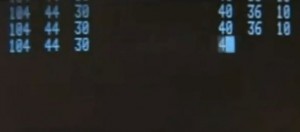 What, then, is the word “target” or an arbitrary codename standing for? If it is simply marking or registering the intent of an assigning officer, it raises the question whether remote viewing still involves, or is even mainly, a form of telepathy—that is, connecting, via that codeword, to the intentions of a distant, unknown person who does know where the target is, rather the same way a psychometrician might handle a cigarette lighter and provide information about its owner. Or, does “target” register or mark something more abstract in the nonlocal psychic database, like “the right answer” or “the correct target”? Does it even serve a purpose, or is it just a kind of empty ritual in the whole process?
What, then, is the word “target” or an arbitrary codename standing for? If it is simply marking or registering the intent of an assigning officer, it raises the question whether remote viewing still involves, or is even mainly, a form of telepathy—that is, connecting, via that codeword, to the intentions of a distant, unknown person who does know where the target is, rather the same way a psychometrician might handle a cigarette lighter and provide information about its owner. Or, does “target” register or mark something more abstract in the nonlocal psychic database, like “the right answer” or “the correct target”? Does it even serve a purpose, or is it just a kind of empty ritual in the whole process?
The notion that the psychic apparatus can seek and find “the right answer” based on an arbitrary signifier is another version of the basic stone of offense that prevents many people, especially hardcore skeptics, from accepting psi on principle: Where is the psychic getting their information? The persistence of the electromagnetic theory, or the concept of an “energy” being transmitted through space, at least held out the possibility that psi had a rational basis that might one day be assimilated within our understanding of physical laws. But the SRI work, in various ways, undid those notions and left psi without any firm footing, even as it resulted in an actual method that could be taught and applied in real-world settings. In absence of a nice, materialist-sounding theory, the behavior, or character, of psi becomes almost like an interaction with an omniscient intelligence.
Traversing Events by Association
So, it is partly this situation and realization—that information is structured in the universe such that it can be accessed through arbitrary symbols—that Vallee meant by a physics of information that would replace our everyday physics of space and time conceived as dimensions. Cartesian coordinates (which he astutely notes are probably conceptual artifacts of graph paper) are inadequate for accessing data on a computer network. Information is scattered randomly and in fragmentary fashion in such systems and must be accessed through addressing schemes and algorithms that home in probabilistically on the required data. Search terms connect to this information associatively.
Synchronicities and remote viewing both share the central mystery of meaning: How can the Universe know our own intentions, thoughts, needs, etc.?
He suggests that the problem of accessing information in psychic space via association is directly related to a more familiar problem experienced even by non-psychics, the meaningful coincidences Jung called “synchronicity.” During the period leading up to Messengers, Vallee experienced a real doozy, which shook his prior assumptions about causality to the core. After seeing the name Melchizedek scrawled on the Paris metro, Vallee learned that the name (Abraham’s teacher in the Old Testament) referred to a UFO group, which turned out to have members even in California, where he was then living. He then devoted a great deal of work to this and other groups and their beliefs about UFO contact. Then, the week when he started compiling his notes on Melchizedek and writing Messengers, he was given a cab ride in LA, and when he later looked at the receipt the driver had given him, it said “Melchizedek.” There was only one person with that surname in the LA phone directory. Unless someone or something was staging an elaborate hoax to screw with him, the odds against that one person driving the cab he happened to hail on an LA street are impossible to calculate but must be astronomical.
 Creative work invites small synchronicities, almost to the point where I consider it its own variety of the phenomenon. Even in the course of writing this post, I experienced an intense perfect storm of “research synchronicities” in which previously unread books or previously unseen web pages magically fell open to the exact information I needed and/or took me down some personally significant rabbit hole. Any creative writer or artist knows this experience, and may even come to take these things for granted. However, synchronicities of the scope of Vallee’s Melchizedek are rarer and may be life-altering. Jeffrey Kripal, who visited Vallee’s home while researching a chapter on him for his book Authors of the Impossible, notes that Vallee had built a series of five stained glass windows in his study honoring his life’s passions; one of them depicts the Biblical Melchizedek. (As I suggested in a previous post, honoring our synchronicities has the effect of connecting with the thread of our enjoyment and setting up the expectation of coincidence, which increases their frequency.)
Creative work invites small synchronicities, almost to the point where I consider it its own variety of the phenomenon. Even in the course of writing this post, I experienced an intense perfect storm of “research synchronicities” in which previously unread books or previously unseen web pages magically fell open to the exact information I needed and/or took me down some personally significant rabbit hole. Any creative writer or artist knows this experience, and may even come to take these things for granted. However, synchronicities of the scope of Vallee’s Melchizedek are rarer and may be life-altering. Jeffrey Kripal, who visited Vallee’s home while researching a chapter on him for his book Authors of the Impossible, notes that Vallee had built a series of five stained glass windows in his study honoring his life’s passions; one of them depicts the Biblical Melchizedek. (As I suggested in a previous post, honoring our synchronicities has the effect of connecting with the thread of our enjoyment and setting up the expectation of coincidence, which increases their frequency.)
Synchronicities like Melchizedek and remote viewing within the new nonlocal paradigm of Vallee’s SRI friends both share the central mystery of meaning: How can the Universe know our own intentions, thoughts, needs, etc.? There is something outrageously “godlike” about synchronicity, and the extent to which we are awed (and confused) by such occurrences attests to our unwillingness to leave it all up to God or some higher intelligence.
In Messengers, Vallee gave a fascinating taste of what a physics of information would entail, and how it might link up his various interests:
If there is no time dimension as we usually assume there is, we may be traversing events by association. Modern computers retrieve information associatively. You “evoke” the desired records by using keywords, words of power: you request the intersection of “microwave” and “headache,” and you find twenty articles you never suspected existed. Perhaps I had unconsciously posted such a request on some psychic bulletin board with the keyword “Melchizedek.” If we live in the associative universe of the software scientist rather than the sequential universe of the spacetime physicist, then miracles are no longer irrational events. The philosophy we could derive would be closer to Islamic “Occasionalism” than to the Cartesian or Newtonian universe. And a new theory of information would have to be built. Such a theory might have interesting things to say about communication with the denizens of other physical realities.
The Universe as Dream
Information is only information to a thinking being. Thus there can be no abstract, objective physics of information; rather, such a physics would be a sort of epistemology, the study of knowledge and how we know, and how it inevitably relates to a subjective knower. This inevitably leads to the question of consciousness and its relation to matter (including the brain).
The fact that synchronicities and UFO phenomana so strongly reflect an associative (rather than causal) logic tells us—and early on, told Vallee—that they cannot be regarded solely as matters of objective reality.
The notion that we exist in a nonlocal quantum field of information that fundamentally has no spaciotemporal dimensionality at all is widely accepted in the physics community as well as among today’s psi researchers, and thus is destined to transform the brain sciences and psychology as well (even if the psychologists need to be dragged into the new paradigm kicking and screaming). The physicalist presumption that consciousness arises from brain activity cannot be supported either philosophically or empirically (as any number of writers have lately pointed out). And for the most part, information may not in fact be “stored” in the brain as representations, despite our habit of thinking about it as a memory bank.
Yet, the brain is undeniably central in our embodied experience of being alive, either as a mediator between consciousness and events unfolding in physical reality (for instance as a “receiver,” although that partakes of a metaphor that is becoming increasingly obsolete) or, in Bernardo Kastrup’s terms, as an “image” of the localization of our egoic experience within the larger field of consciousness. Whatever the case, I suspect that a future Quantum Neuroscience may come to understand the brain as a system of finding needed information from the larger nonlocal quantum field—that is, it is an information registration or accession system, like a card catalogue in a library or, just as Vallee anticipated, a search system in a computer network. (Or, it will be seen as the ‘image’ of such a system.)
What occurrences like Melchizedek seem to suggest is that the structure of time and causality as we experience them are dictated by the associative linkages among symbolic information. The universe of potential things to know, potential information, may be “out there” in the nonlocal field, but our brains are the gateway to it, because our neural architecture contains the accessing scheme. The study of dreaming and the ancient punny, associative, and spatially organized “art of memory” provide much insight into how this scheme functions and is created and maintained.
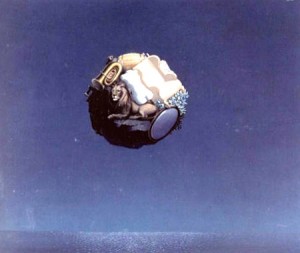 Dreaming is essentially the art of memory operating automatically while we sleep, although it probably also goes on continuously below the level of conscious awareness even during waking hours. I have described this elsewhere as “making new memories” although it would probably be more accurate (following the recent work of Sue Llewellyn) to say “making associative junctions.” Those junctions not only help us access mnemonic information (wherever it actually resides) and, more often, cobble-together good-enough reconstructions of past events with a liberal dosing of schematic “frog DNA” to make it seem and feel complete and accurate. These junctions also keep events in our lives bundled together to preserve an adequately accurate internal chronology. In the absence of an objective temporal yardstick, keeping events that happened together associated with each other is the only way we can preserve a sense of our own biography and, thus, sense of self.
Dreaming is essentially the art of memory operating automatically while we sleep, although it probably also goes on continuously below the level of conscious awareness even during waking hours. I have described this elsewhere as “making new memories” although it would probably be more accurate (following the recent work of Sue Llewellyn) to say “making associative junctions.” Those junctions not only help us access mnemonic information (wherever it actually resides) and, more often, cobble-together good-enough reconstructions of past events with a liberal dosing of schematic “frog DNA” to make it seem and feel complete and accurate. These junctions also keep events in our lives bundled together to preserve an adequately accurate internal chronology. In the absence of an objective temporal yardstick, keeping events that happened together associated with each other is the only way we can preserve a sense of our own biography and, thus, sense of self.
In searching our memories for information, we do precisely what Vallee described: we “traverse events by association.” Those associations operate exactly the way Freud described in his work on dreams: They are often non-logical, governed by root metaphors that are often highly concrete (even superstitiously simple-minded), and operate by puns and various literary devices and tropes—precisely the logic of surrealism, myth, and folklore. And they are situated in distinct spatial environments that are often familiar or related to the environments of our early life and formative years. As I argued in my “Feeding the Psi God” post, precognitive dreaming appears to create associative memory junctions for future experiences in precisely the same way.
The fact that not only synchronicities but also UFO phenomena so strongly reflect precisely such an associative (rather than causal) logic tells us—and early on, told Vallee—that they cannot be regarded solely as matters of objective reality. The psyche of the witness is inextricably entwined with whatever is happening to him/her on an objective level. It could be that technology is interacting with and stimulating their associative neural networks to produce a certain experience; it could be that alien beings or technology somehow navigate a psychic interspace; or it could be that, to make sense of a fundamentally baffling experience, the witness is forced to draw upon deep cultural and personal associations. It could be all of these things. Duensing’s blog, A Transit of Contingencies, is essentially a prolonged, dense, but rewarding meditation on these possibilities. (A recent Radio Mysterioso tribute conversation with Duensing afficionados “Burnt State” and “Red Pill Junkie” is a good, accessible exegesis of Duensing’s ideas.)
Before Vallee, Carl Jung insightfully saw the psychic connection or dimension of UFOs, regarding them as linked in some way to the collective unconscious. The folkloric dimensions of UFO encounters certainly speak to the shared nature of basic cultural symbolism within communities. But the most fundamental symbols in our lives—the most effective “power words” in our associative mental registry—are always those that feel most unique to us, even if we happen to share those symbols with others or, indeed, with the whole human race.
There’s a large body of anthropological research on the way shared symbols become powerfully personal and motivating by linking to our personal psychosexual lives, and it is why Freud remains hugely influential in anthropology (probably the only place in science, anymore, that he is still read), whereas Jung, despite taking such a deep interest in myth, is not. The motivating power of symbols, be they simple arbitrary signifiers like “chapeau” (or “target”) on up to core religious and cosmological motifs, is not automatic and mechanical, emanating from some collective psychic interspace that precedes us, but is highly idiosyncratic and, in the case of religious symbolism, built up through emotionally moving religious (and, I would add, paranormal) experiences in our lives. The unconscious, where our associatively linked symbols are active, is consequently a deeply private, personal place.
This matters, because it affects how we understand our relationship to distant or nonlocal information if our brain is indeed a search engine. The fact that the associations used by our search system are built up through life experience may in the end be all the difference between the future and the past: the past—or, one’s own past—is that which has been accessioned, like a library or museum collection. It is that accessioned stuff that must provide the initial breadcrumb trail of associations leading us to the new and unfamiliar. (It also suggests why research with UFO witnesses must be, as Vallee suggests, a process, unfolding over time, to excavate personal meanings and associations, not unlike a psychotherapeutic relationship.)
The Eyes of Heisenberg
There may be no physical spaciotemporal barrier to accessing all information, anywhere, anytime; as information formations, we are all made of the same stuff. There’s no real discontinuity between “me, here, now” and what’s happening on Gliese 667c, or what will happen there in a million years. But in order to find out what is happening there and then, I must be able to formulate a question—what I want to know—in precise enough terms to retrieve an answer from the cosmic database. That’s tough, because I don’t know what I don’t know; and, I wouldn’t recognize the needed information if I did retrieve it, or have any way to judge its accuracy.
Psi may only be functional—and useful—when the psychic eventually has an experience that definitively confirms or disconfirms whether or not he/she “got it right.”
This happens to be the basic epistemological quandary that led Plato to conclude that all learning is actually remembering, or anamnesis. Basically, we don’t know what we don’t know, so there is no way to know something new that we didn’t already know before, in a previous life. This would fit pretty well with today’s consciousness-centric philosophies like Kastrup’s—that the self with its brain-image is a “dissociated alter” of a larger singular all-knowing “Mind at Large”; everything we don’t know is really what we have forgotten we know or forgotten we could know, if we only knew how to ask.
It also suggests why psi may only be functional—and useful—when the psychic eventually has an opportunity to make a physical observation or otherwise have an experience that definitively confirms or disconfirms whether or not he/she “got it right.” It has been suggested that even what seems like remote viewing could in fact be precognitively seeing something like “the right answer” as it is confirmed during a feedback session at a later time—what I described elsewhere as the “scene of confirmation.” Psi researchers Edwin May and Sonali Bhatt Marwaha have suggested that all psi experiences are precognitive, and Vallee raised this possibility after a talk at the 2007 IRVA conference. It would indeed reduce some of the mystery about how we locate and access psychic information: Instead of somehow finding and accessing information omnisciently from the entire nonlocal quantum field, the psychic could be just drawing information from a single channel, a scene in his or her own future that is/will be linked by memory association to the remote viewing session itself.
Psychic experiences that are not confirmed are, well, not confirmed, and one must beware of circular or tautological psychic claims, of which there are many. The great pitfall claiming the minds and careers of some of the original Star Gate viewers seems to have been attempting to view uncorrelated (or unconfirmable) targets like UFOs or historical events like the Crucifixion. There seems to be even something Heisenberg-like about psychic information: It doesn’t count as true or false—and thus, doesn’t really exist as “information”—unless and until some real state of affairs is observed physically by the psychic him- or herself.
As I have argued, the precognition theory can also explain synchronicity. Insofar as we are ignorant of the functioning of precognition in our lives (the crucial Lacanian dimension of misrecognition), we would dissociate from, disavow, or more generally just misattribute and misinterpret information that came to us via this channel. The same way that subliminally or unconsciously acquired insight and knowledge can be misattributed to another intelligence interacting with us, future information would be misattributed to present or past circumstances—the “temporal bias”—and in certain extreme cases this would produce jarring experiences of “meaningful coincidence”: a feeling that the cosmos had stage-managed events to provide some indication to us or give us needed information.
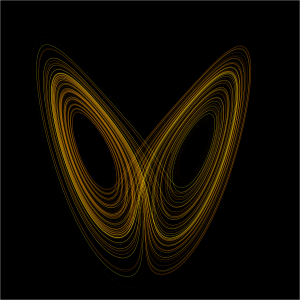 Even with Melchizedek, the “time-loop amplification” model I proposed could explain it: In other words, the amazing experience of reading a cab receipt with the name Melchizedek on it could have primed Vallee, months or years earlier, to notice that name on a Paris metro wall. The name on the receipt would have been “amazing” (and thus sent ripples back in time along the resonating string of his creative jouissance) because of the intellectually exciting intervening life events (researching the Melchizedek group, etc.), which unfolded because of that priming.
Even with Melchizedek, the “time-loop amplification” model I proposed could explain it: In other words, the amazing experience of reading a cab receipt with the name Melchizedek on it could have primed Vallee, months or years earlier, to notice that name on a Paris metro wall. The name on the receipt would have been “amazing” (and thus sent ripples back in time along the resonating string of his creative jouissance) because of the intellectually exciting intervening life events (researching the Melchizedek group, etc.), which unfolded because of that priming.
As preposterous as they sound on the surface, such time-loop structures must exist if information can travel through time and influence the past, because our resulting actions would have to be able to feed back on that future information (or else negate it, which is probably the more likely outcome—the other butterfly wing of the strange attractor in the dynamic systems space of psi). Jung was right to call synchronicity “acausal” if we take that to mean this kind of tautological chicken-and-egg logic. In his TED talk, Vallee himself invoked a similar “double causation” synchronicity theory advanced by Philippe Guillemant: “Our intentions cause effects in the future that become the future causes of present effects.” A meaningful nexus like “Melchizedek” may be a kind of symptom-vortex acting as an attractor for a person’s unconscious jouissance—or what in Lacanian terms is called a “symptom.”
Physics of Omnipotence
Quantum physics leads tentatively to the conclusion that we are potentially omnipotent as well as omniscient, given the necessary role of conscious observation in collapsing wave functions and thus converting possibilities to actualities. The $64,000 question is, does psi “observation” by itself have a similar effect? Is following that breadcrumb trail of tokens and search terms—or traversing events by association—just accessing information via the brain’s associative search engine (associations built up over a lifetime of idiosyncratic experience and dreaming), or is it also co-creating the reality it is searching for?
is following that breadcrumb trail of tokens and search terms—or traversing events by association—just accessing information via the brain’s associative search engine, or is it also co-creating the reality it is searching for?
One possibility I’ve raised previously is that the difference between psychic perception and embodied observation might be that the former only “sees/knows” certain probable or likely outcomes in a still-indeterminate condition of Quantum superposition. This seems likely to me, because otherwise precognition would actually amplify determinism, collapsing the wave functions in front of you and thus solidifying your fate. Viewing the future psychically, I propose, should not be able to force it to come true (I shouldn’t think). Thus here again, it really all comes down to those “scenes of confirmation”—the physical observation of outcomes. Such scenes may play a crucial role in the circuit of psi and the manifestation of our psychic intentions. It also raises questions about the real mechanism at work in, for example, cases of PK and psychic healing. Are intentions really acting at a distance in the present, or are they actually leading us to collapse wave functions at a future scene of confirmation, as in the precognition model of ESP/remote viewing?
If the latter is the case, it could explain a lot of baffling problems in science, like the tendency not only in psi research but in all research for results to conform to experimenter expectation (I’ll return to this in future posts). And again, this idea might also illuminate why psi leads to such a quagmire of deception and paranoia when it is deployed against “uncorrelated targets” like alien intelligences, UFOs, or the Loch Ness Monster.
Tangentially, this notion could also unify my “psychic astronauts” and “noöverse” hypotheses. Any psychic exploration of spacetime might require embodied machine proxies to help conscious beings back home confirm and thus assist in the waveform collapse that makes psychic “seeing” (not to mention world-creation) reliable. If some subset of UFOs are, as I have speculated, nonsentient drones, they may nevertheless be an essential component in somebody somewhere’s “psychic space program” (or, perhaps, “psychic dimensional program”).
* Jim Schnabel’s book Remote Viewers omits Vallee’s crucial contribution, the use of geographical coordinates as an addressing scheme, claiming instead that Swann thought up the idea himself one day while lying by the pool. Vallee’s more detailed and, I am sure, more trustworthy account appears in his Forbidden Science, Vol. 2; he also discusses it in his IRVA talk.

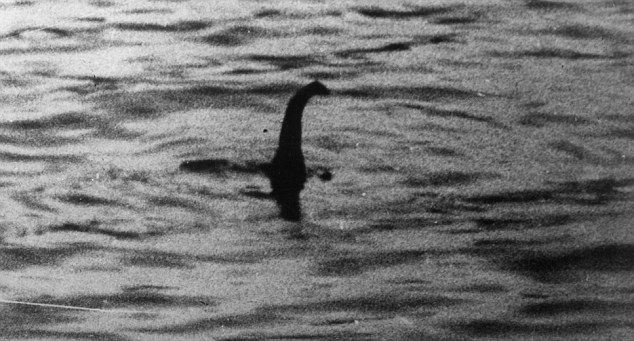





Glad to see you mention Bernardo Kastrup. I think he’s a rock-star in the “materialism is not sufficient” world. I also appreciated the mention of Burnt State and Red Pill Junkie’s post-mortem tribute to Bruce Duensing on Radio Mysterioso. I thought it was very good. My main take-away from that was pondering just what kind of “head” Duensing was?
I have for several years been toying with the idea that “matter” is a sub-set of “information,” based on my layman’s appreciation of the current conversations between physicists. Would you think it’s fair to say that this is along the lines of what Vallee is talking about? Perhaps Duensing as well?
This post brings to mind the recent “debate” between Michael Schermer and Rupert Sheldrake (http://www.thebestschools.org/sheldrake-shermer-materialism-in-science-opening-statements/). I’ve only read the opening rounds. Here’s a summary of their positions:
“Dr. Sheldrake will defend the position that science needs to free itself from materialist dogma; indeed, science misunderstands nature by being wedded to purely materialist explanations.
“Dr. Shermer will oppose Sheldrake’s position, arguing that science, properly conceived, is a materialistic enterprise; for science to look beyond materialist explanations is to betray science and engage in superstition. ”
Thus, Schermer cannot accept Sheldrake’s assertion that one can approach science with methodological naturalism that is not at the same time materialistic, because once you go beyond “the material,” then how does one discriminate between “the natural” and “the religious/super-natural” (for instance, read stuff by Mark Booth… his “idealism” appears to allow in ideas/truths that are very much at odds with the physical evidence of history)? Truly, in my own quest to understand how “idealism” can operate in a naturalistic way, I find this to be a sticking point. From Schermer’s point of view, anything “psi” cannot exist because it is trans-material.
I try and stick to a defition of psi that goes something like this: “The experience of receiving apparently valid information about the state of the universe mediated in a non-material fashion.” Note: When I’m thinking about things in this way, I am leaving a LOT of room for various kinds of un-/sub-/non-conscious processing that might be materially mediated.
It seems to me that, in this post, you are knocking up against Schermer’s objection, when it comes to phenomenon associated with remote viewing: How do we figure this out without the necessity of some omniscient intelligence that might as well be called “God”? Once we allow in the idea of “God,” then how do we differentiate the reality of whatever that enormously huge thing might be from the wide variety of historical doctrines about “God”?
To come at the “how can we build a methodologically naturalist way of examining the world that is Idealistic (or at least, non-materialistic”)?” from a slightly different direction: I listened to this interview from Alex Tsakiris’ SKEPTIKO:
http://www.skeptiko.com/240-david-lane-patricia-churchland-part-2/
…which I just re-read (I think the audio is more “clear” than the transcript). I can’t tell you exactly where or why in the interview this idea occurred to me, but one of the things I came away with was, even if we are living in a “consciousness first” universe, the vast majority of our normal, everyday experience is going to very solidly appear to be “material” (viz: the extraordinary correlation between physical states of the nervous system and specific kinds of feelings, thoughts, and behaviors that underlie the idea that “brain produces mind.”) Just what kinds of experiences will disconfirm materialism because material mediation cannot possibly explain them? Just the kind reported here regarding Remote Viewing.
I hope this hasn’t been too long or too off-topic, but I’ve been trying to crystallize some of these ideas for a while, and this post seemed to be right on point. What I feel like I’m working on is trying to get to a definition of Idealism or non-materialism that doesn’t immediately default to something “spiritual.” Tsakiris uses that word quite often, and I’m not sure it’s helpful, given the present state of discourse.